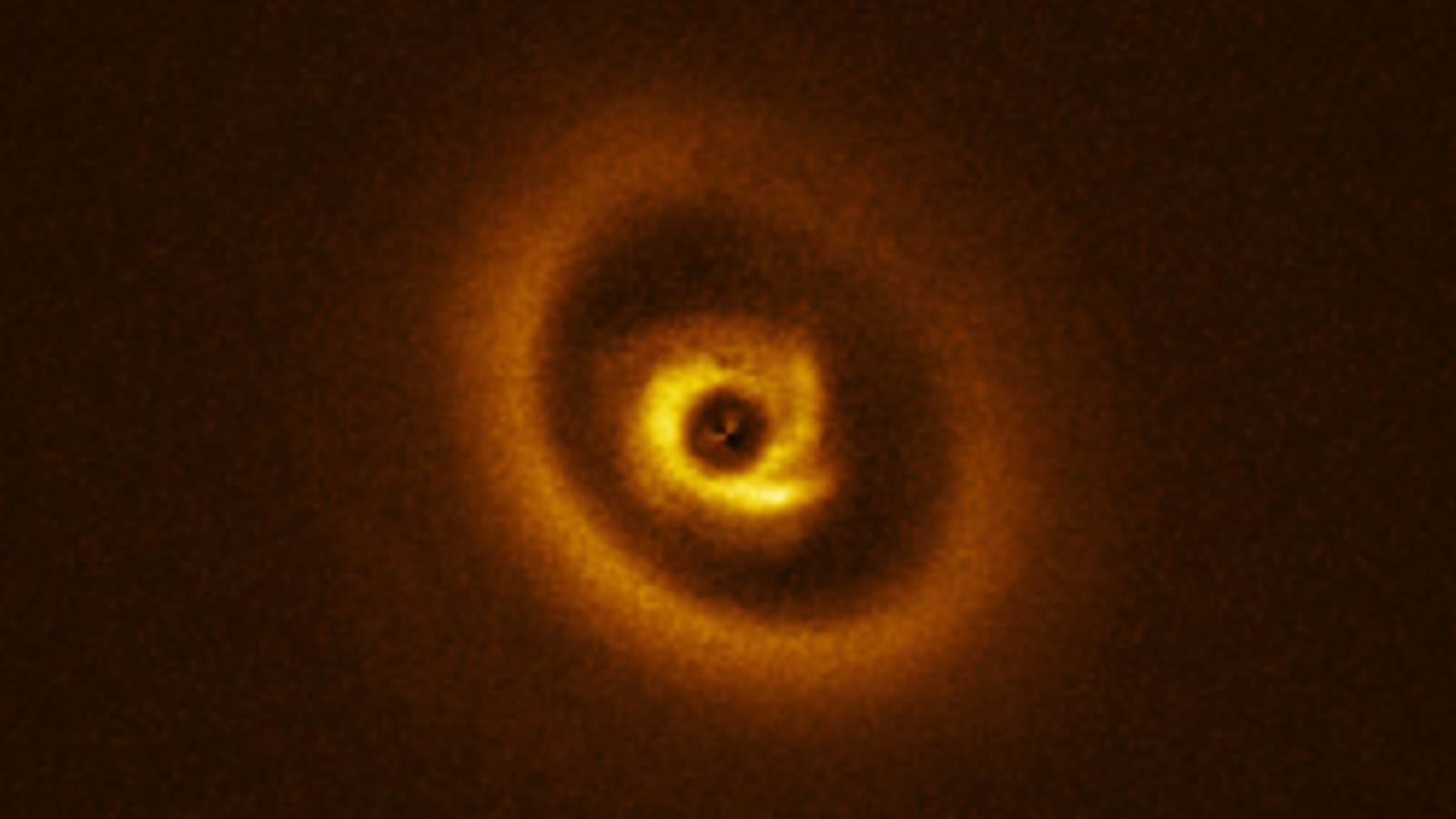Researchers have captured a mesmerizing image of what they believe to be a giant planet forming in the orbit of a young star, according to a new study.
The image, taken with the European Southern Observatory’s Very Large Telescope in Chile, shows the star surrounded by an eye-shaped disk of swirling gas and dust. A dark ring within the disk suggests that the gravity of a newborn planet, likely a gas giant, is accumulating material as it carves a path around the star.
“We are talking about a fairly massive planet here, a few times the mass of Jupiter most likely,” study lead-author Christian Ginski, a lecturer in the physics unit at the University of Galway in Ireland, told Live Science in an email. “It clears out a gap as it orbits because material falls down onto the planet. One might almost think of the planet like a hoover in that sense sucking up all the dust.”
This could be a rare example of a planet detected while still in its infancy. Ginski and his colleagues released a simulation of the potential giant exoplanet within the disk and hope to confirm its presence using the James Webb Space Telescope in the coming months.
The researchers posted their findings Monday (June 9) to the preprint database arXiv, with the paper accepted for future publication in the journal Astronomy & Astrophysics.
Related: Ginormous planet discovered around tiny red star challenges our understanding of solar systems
Ginski and his colleagues are trying to learn more about the diversity of planetary systems and the forces needed to create a solar system similar to our own. They do this by seeking out young stars, which could be actively giving birth to new planets. Ginski noted that while researchers have detected several thousand planets around distant stars, these are all quite old.
“We are basically looking at the meal after it is fully cooked,” he said. “Young planets inside their forming disk help us to understand all the ingredients and how they interact with each other. So far we only have 1 confirmed such planet in its infancy and 2-3 more candidates which are not fully conf[i]rmed yet.”
The young star at the center of the new image is named 2MASSJ16120668-3010270, or 2MASSJ1612 for short, and is located 430 light-years from our solar system. A 2024 study noted the presence of a gap in the star’s disk, so researchers already suspected that there could be a planet forming there.

In the new study, 2MASSJ1612 was viewed in scattered near-infrared light for the first time, revealing previously unseen details, including two spiral arms emanating from the center of its disk. Ginski explained that the arms form because the planet is perturbing, or altering the disk, as it moves, creating what are known as density waves. He likened this effect to the ripples created by throwing a stone in a pond.
“The stone is perturbing the water, sending out waves, somewhat similar to the planet in the disk,” Ginski said. “Now think about the stone skipping over the water instead of just plunging into it. Ever more complex wave pattern are the result. In the disk, where the planet circles around the star, this leads eventually to the formation of these spiral patterns.”
Ginski noted that he has observed around 100 young star systems and that researchers typically find either the carved-out ring or the spiral structures, but in this case, the images revealed both — as theoretical models of planet formation predict. He said he felt like “a kid on Christmas morning” when he first saw the images.
“Basically it appears we may be looking at an absolute textbook case here,” Ginski said. “So that makes us think that we can predict what kind of planet is in this disk, and we think it should be one that we can actually take an image of with the right equipment (which is why we secured follow-up time at the James Webb Space Telescope).”




